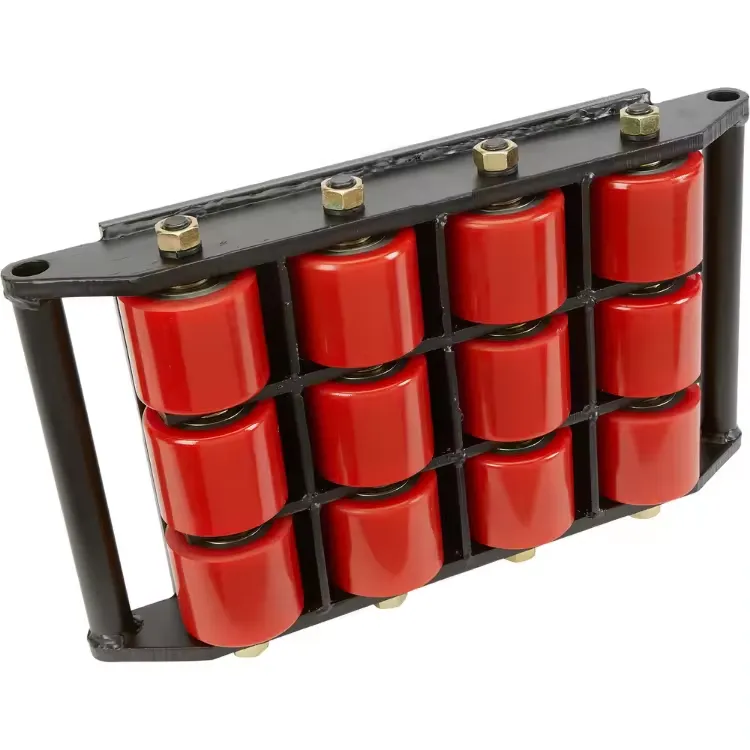Innovative Magnetic Lifting Solutions for Efficient Material Handling and Transportation
The Mechanism and Applications of Magnetic Lifting Devices
Magnetic lifting devices have revolutionized the way heavy loads are handled in various industries. Utilizing the principles of magnetism, these devices offer a safe and efficient means of transporting ferromagnetic materials, with significant advantages over traditional lifting methods such as slings and hooks. This article delves into the mechanisms behind magnetic lifting devices, their various applications, and the benefits they bring to industrial operations.
Understanding Magnetic Lifting Devices
At the core of a magnetic lifting device is the electromagnet, which generates a magnetic field when an electric current flows through it. Unlike permanent magnets, electromagnets can be turned on and off, allowing for precise control over the lifting operation. When the electromagnet is activated, it adheres to ferromagnetic objects, such as steel plates or machinery parts, and provides a secure grip. Once the load is positioned, the electrical current can be cut, releasing the object safely at its desired location.
Magnetic lifting devices come in various configurations, including magnetic chucks, lifting magnets, and magnetic cranes. Each type is designed for specific lifting scenarios and capacities, catering to a wide range of industrial applications.
Applications of Magnetic Lifting Devices
The versatility of magnetic lifting devices makes them invaluable across multiple sectors, including manufacturing, construction, recycling, and shipping. Here are a few prominent applications
1. Manufacturing In manufacturing facilities, magnetic lifting devices are often employed to transport heavy sheets of metal or components within assembly lines. Their ability to securely lift and maneuver heavy items enhances productivity by reducing manual handling and minimizing the risk of injury.
2. Construction In construction sites, magnetic cranes equipped with lifting magnets are used to position steel beams and plates. They enable the precise placement of heavy materials, which is crucial for structural integrity and safety in building projects.
3. Recycling The recycling industry gains significantly from magnetic lifting technology. Electromagnetic separators can efficiently sort ferrous metals from mixed waste, streamlining the recycling process and improving material recovery rates.
magnetic lifting device

4. Shipping and Warehousing In shipping yards and warehouses, magnetic lifters are utilized for stacking and moving heavy pallets and containers. This reduces the need for forklifts and enhances the speed of operations, contributing to better inventory management.
Advantages of Magnetic Lifting Devices
The adoption of magnetic lifting devices offers several notable advantages over conventional lifting methods
- Safety Magnetic lifting devices significantly reduce the risk of accidents that can arise from load slippage or manual handling errors. Their strong grip ensures that loads remain secure during transportation.
- Efficiency These devices can quickly lift and reposition heavy items, thus saving time and labor costs. The automation potential of magnetic lifting systems also allows for better workflow in production lines.
- Flexibility Magnetic lifting devices can handle a variety of shapes and sizes of ferromagnetic materials. This flexibility makes them suitable for diverse applications across different sectors.
- Reduced Wear and Tear Unlike mechanical clamps or hooks, magnetic lifting devices experience less wear and tear, translating to lower maintenance costs and longer service life.
Conclusion
Magnetic lifting devices have transformed material handling in various industries, offering a blend of safety, efficiency, and versatility. As technology continues to evolve, it is likely that we will see even more innovative applications of magnetic lifting solutions. With their ability to streamline operations and enhance productivity, these devices are essential tools in the modern industrial landscape. As businesses prioritize safety and efficiency, the reliance on magnetic lifting technologies is bound to grow, making them a crucial component of future material handling solutions.
-
Versatile Lifting Solutions with Gantry and Overhead CranesNewsAug.29,2025
-
The Versatile Mobile Gantry Crane SolutionNewsAug.29,2025
-
Reliable Movement with Heavy Machinery Skates and RollersNewsAug.29,2025
-
Reliable Lifting Performance with 2000 lb Gantry Crane and 2 Ton Overhead SystemsNewsAug.29,2025
-
Maximize Lifting Efficiency with PML Magnetic LiftersNewsAug.29,2025
-
Efficient Relocation Starts with Reliable Machinery MoversNewsAug.29,2025
-
Efficient and Safe Lifting with Permanent Magnetic LiftersNewsAug.29,2025
